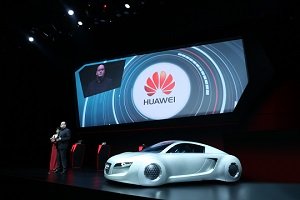
Huawei’s LTE modules provide the new Audi Q7 SUV with the ability to support 2G, 3G and 4G networks, TDD-LTE and FDD-LTE standards. Enabling lightning fast data transfers with download speeds of up to 100Mbps, the partnership provides users with internet-enabled key features for an enhanced driving experience.
At CES Asia 2015, Huawei and Volkswagen also jointly demonstrated a series of apps that safely allow drivers to use GPS navigation systems, play music, send and receive messages, and make phone calls while behind the wheel. The apps support MirrorLink, an open technology standard designed to maximize interoperability between smartphones and vehicle-mounted systems. They cover multiple services including phone calls, SMS, navigation, multimedia, and payment that are all centered on smartphones.
Automobiles are set to become the next big devices after smartphones and wearables as communications between cars and urban infrastructure is realised. One industry report says that 90% of cars will have internet connectivity by 2020 and that this will be a major element in expanding the Internet of Things.
“By partnering with industry-leading automobile companies, Huawei aims to bring the best interconnection services and solutions to the next generation of cars, while actively promoting interaction between cars, smartphones, wearables and people; creating a seamless communication experience and driving environment,” said Richard Yu, CEO of Huawei Consumer Business Group, Huawei.
Sven Patuschka, Executive Vice President for Research and Development of Volkswagen Group China, said: “Our cooperation with Huawei will seamlessly blend the capabilities of users’ smartphones with the systems in their cars. All content on the phone will be shown in real time on the car’s infotainment touch screen. The result is smart and convenient interaction between phone and car.”











